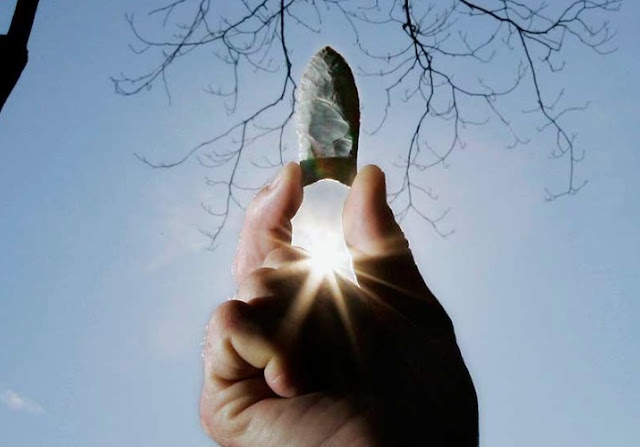No one knows for sure when the first human set foot on the land we now know as Ohio, but the best current archaeological and genetic data suggest it couldn’t have been much before about 16,000 years ago.
 |
| Credit: Eric Albrecht/The Columbus Dispatch |
The Clovis culture is named for Clovis, New Mexico, where archaeologists first recognized a distinctive type of spear point directly associated with a mammoth skeleton. Hundreds of Clovis points have been found across Ohio, but most of them were found in the major river valleys of central Ohio with very few in the southeastern corner of the state. Some archaeologists conclude from this that the Clovis people chose to avoid the hill country, favoring instead the flatlands, where it was easier to hunt mammoths and mastodons. But a new discovery suggests that the Clovis culture didn’t avoid this region; it’s just harder to find Clovis sites among the hills and hollows of southeastern Ohio.
Metin Eren, an archaeologist at Kent State University, and several colleagues studied a small collection of Clovis artifacts found in Salt Fork State Park in Guernsey County. They presented the results of their research in the October Journal of Archaeological Science: Reports.
The team studied nine stone tools found at the site, including an unfinished Clovis point, four fragments of other points, a scraper and three other tools, as well as 118 pieces of chipped flint. They examined 33 of these artifacts under high-powered magnification to determine whether and how they had been used.
The broken tip of a spear point exhibited micropolish, confirming that it had been used as a spear. Two scrapers displayed wear patterns suggesting they had been used to scrape fresh hides. Two otherwise unmodified flint flakes showed evidence that they had been used to cut meat, and two other artifacts likely were used to work bone or antler.
Eren and his colleagues conclude that this site represents “at the very least... a small residential campsite in which hunting, game-processing, and tool production and/or tool rejuvenation activities took place.”
They plan to conduct test excavations at the site “to determine how large the site is, whether there are any preserved ... subsurface features,” such as hearths, “and if any potential samples for dating are present.” They also will try to figure out why the Clovis people “chose that spot on the landscape to set up camp.” Such information could help to identify other locations where additional Clovis campsites might be found.
This is only one site, and so far only a handful of artifacts has been found. It might prove to be only an Ice Age Motel 6, where Clovis people stopped while on their way to somewhere else, but the evidence is mounting that Clovis people were right at home in Ohio’s Appalachian foothills.
Author: Brad Lepper | Source: The Columbus Dispatch [January 16, 2018]
